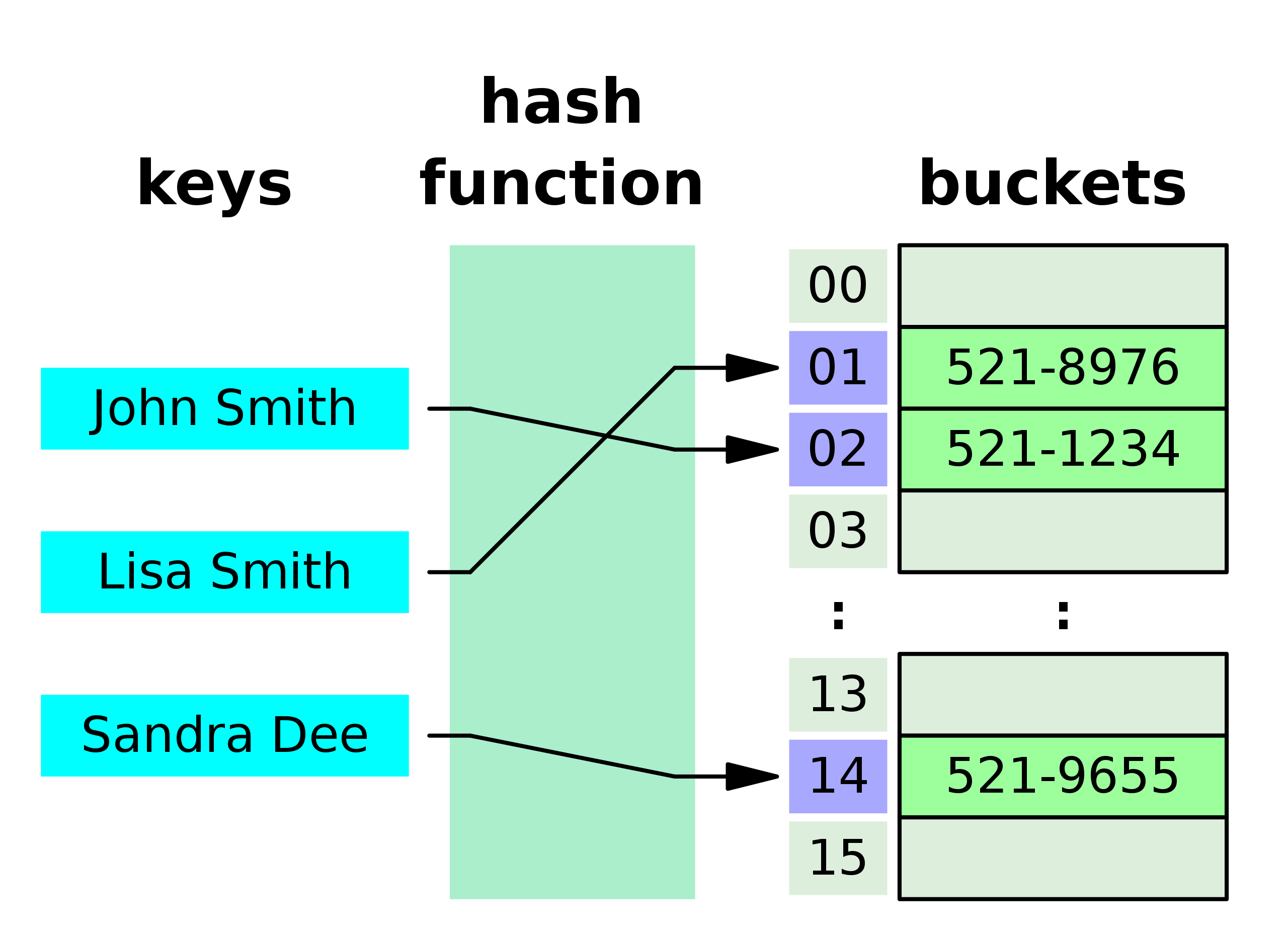What are Hash Tables?
 Diego hernandez
Diego hernandezTable of contents

Otherwise known as hash map, hash, and dictionary.
A Hash Table is a data structure that organizes data for fast lookups; finding a value for a given key is fast with hash tables on average.
A hash table is much like an array, except that it lets you use a special key rather than have to use a sequential index to find a given value.
A hash table goes through a process of making a hash for every value creating a key, the key is unique for every value but it will always be the same for the same value. The process is adequately named hash function, it takes data and outputs a unique string to identify the value with a key.
The image below shows how a name for a phone book gets "hashed" and assigned a number in the underlying array and or linked lists (hash functions can be very complex, my explanation is quite simplified).
In Javascript, hash tables are usually implemented with an object but you can also use a Map or Set.
So why Care?
Hash Maps have come up a lot in coding interview challenges, are in file systems, password verification, and even compilers.
Here's an example of a code problem where one might use a hash table to solve a coding interview problem:
Given an unsorted integer array, find a pair with the given sum in it.
For instance, if the input is nums = [8, 7, 2, 5, 3, 1] and the target is 10, the output should be Pair found [8, 2] or Pair found [7, 3]. However, if the input is nums = [5, 2, 6, 8, 1, 9] and the target is 12, the output should be Pair not found.
One way to solve this problem is to nest for loops to check every possible combination of sums of pairs that equal the target sum.
function findPair(nums, target) {
// intialize nums[i] to 0
for (let i = 0; i < nums.length - 1; i++) {
// run through every element in array comparing it to the first
for (let j = i + 1; j < nums.length; j++) {
// if the desired sum is found, print the elements
if (nums[i] + nums[j] == target) {
console.log(`Found pair ${nums[i]}, ${nums[j]}`);
return;
}
}
}
// if pair is not found after looping through print "pair not found"
console.log("Pair not found");
}
The time complexity for the above algorithm is O(n^2) with no extra space allocated. It doesn't take advantage of a Hash Map and it suffers with exponential growth.
A more efficient approach is to use a Hash table. The runtime can be significantly improved by using this approach.
function findPair(nums, target) {
let numsSeen = new Set();
for (let i = 0; i < nums.length; i++) {
// subtract the first nums[i] from the target giving the second number
// that will equal to the sum
let desiredSecondNum = target - nums[i];
// check if the number exists in the Set, if not return
if (numsSeen.has(desiredSecondNum)) {
console.log(`Found Pair ${desiredSecondNum}, ${nums[i]}`);
return;
}
numsSeen.add(nums[i]);
}
// if pair is not found after looping through print "pair not found"
console.log("Pair not found");
}
The Time complexity for this algorithm is O(n) time.
Summary:
In summary, a Hash table is an excellent alternative to an array when you need to look up values based on a unique key, instead of an index.
Strength:
Lookups are on average O(1)
Weakness:
The unordered nature of a Hash Table makes for costly lookups if say you're trying to find the largest key O(n)
Hope you found this helpful, happy coding!
Subscribe to my newsletter
Read articles from Diego hernandez directly inside your inbox. Subscribe to the newsletter, and don't miss out.
Written by

